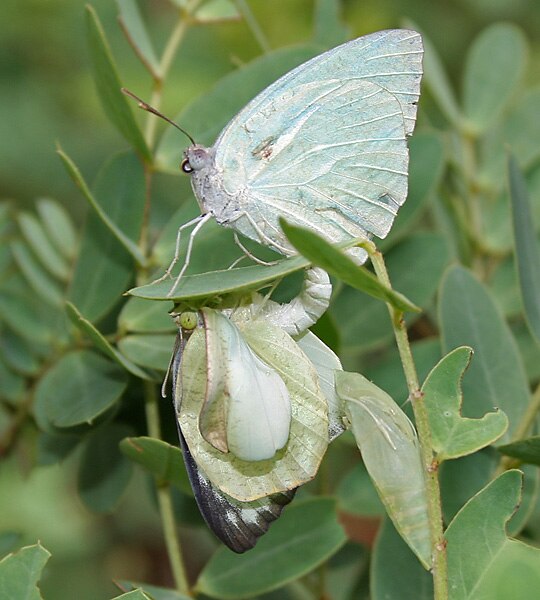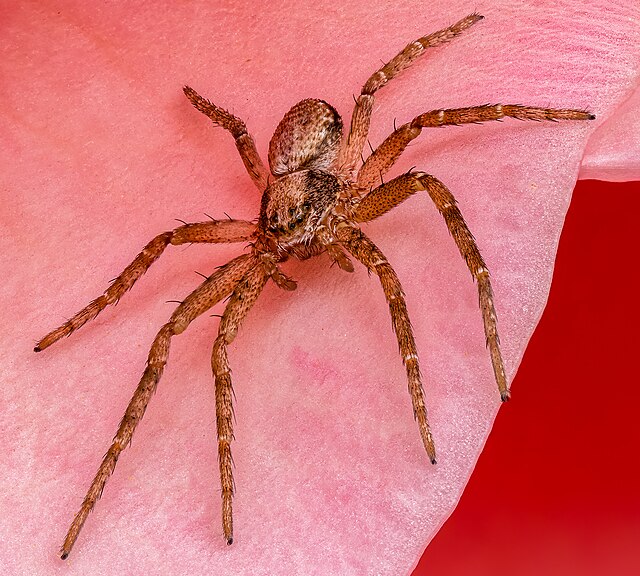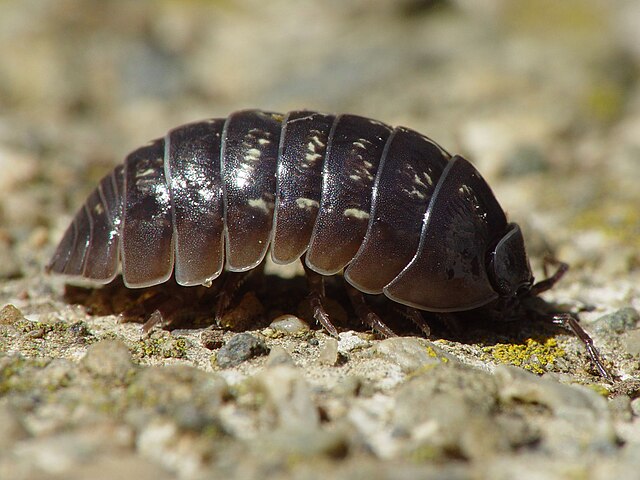A pupa is the life stage of some insects undergoing transformation between immature and mature stages. Insects that go through a pupal stage are holometabolous: they go through four distinct stages in their life cycle, the stages thereof being egg, larva, pupa, and imago. The processes of entering and completing the pupal stage are controlled by the insect's hormones, especially juvenile hormone, prothoracicotropic hormone, and ecdysone. The act of becoming a pupa is called pupation, and the act of emerging from the pupal case is called eclosion or emergence.
Pupa of the rose chafer beetle, Cetonia aurata
Tumbler (pupa) of a mosquito. Unlike most pupae, tumblers can swim around actively.
Adult Hercus fontinalis emerging from cocoon
Mating in pierid Catopsilia pyranthe of male with newly emerged female.
Insects are hexapod invertebrates of the class Insecta. They are the largest group within the arthropod phylum. Insects have a chitinous exoskeleton, a three-part body, three pairs of jointed legs, compound eyes, and a pair of antennae. Insects are the most diverse group of animals, with more than a million described species; they represent more than half of all animal species.
Insect
Insect: Six legs, three-part body (head, thorax, abdomen), up to two pairs of wings
Spider: eight legs, two-part body
Woodlouse: seven pairs of legs, seven body segments (plus head and tail)








